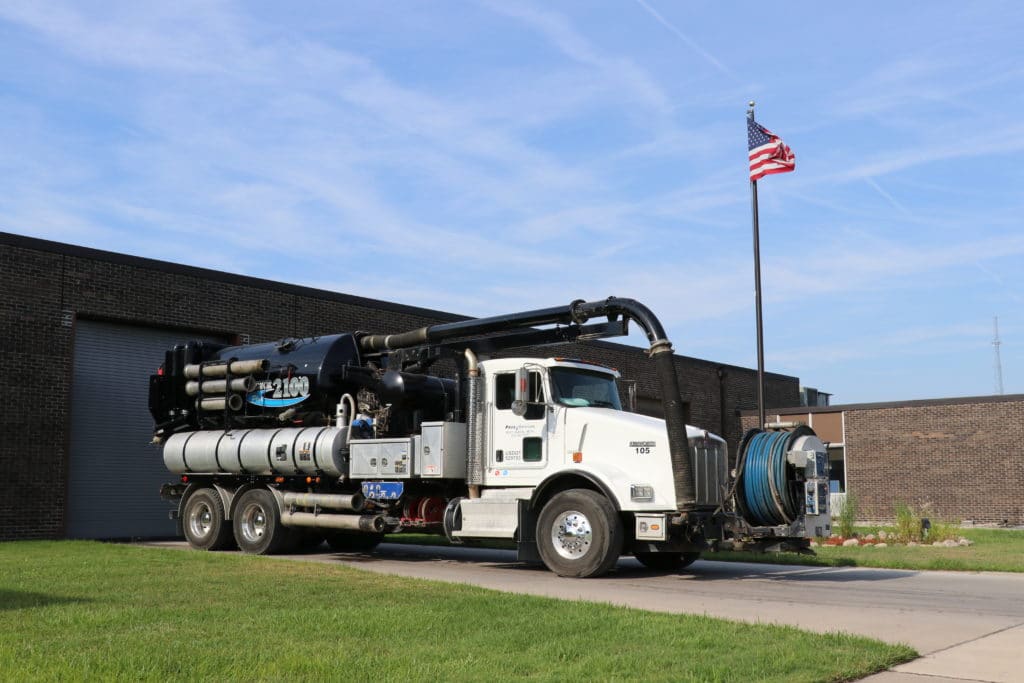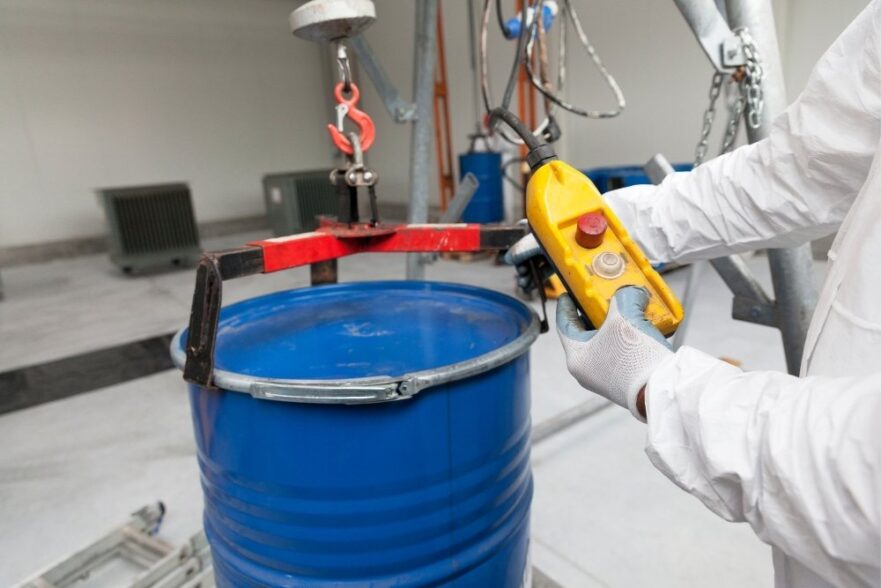Leading Liquid Waste Disposal Melbourne: Trusted Services for Correct Waste Administration
Leading Liquid Waste Disposal Melbourne: Trusted Services for Correct Waste Administration
Blog Article
Exactly How Liquid Waste Disposal Functions: A Detailed Review of Techniques and Technologies Employed

Review of Liquid Waste Kind
The intricacy of fluid waste kinds demands a comprehensive understanding of their attributes and implications for disposal. Liquid waste can broadly be categorized right into numerous kinds, including industrial, metropolitan, farming, and harmful waste. Each group displays unique residential properties, needing particular management methods to reduce ecological and health threats.
Industrial fluid waste stems from making procedures and usually has a series of contaminants, such as hefty steels, solvents, and natural substances. Metropolitan liquid waste, largely comprising wastewater from families and industrial facilities, contains natural matter, nutrients, and pathogens (industrial wastewater treatment). Agricultural fluid waste, including drainage from farms, might have fertilizers, pesticides, and animal waste, posing risks to water top quality and ecosystems
Hazardous liquid waste is characterized by its toxicity, sensitivity, or potential to trigger damage. This category includes compounds like acids, bases, and particular chemicals that necessitate rigid handling and disposal protocols. Recognizing these diverse fluid waste types is essential for establishing effective disposal approaches and making sure compliance with ecological policies. Proper classification and characterization are crucial for executing suitable therapy methods and lessening the damaging effects on public health and the setting.
Physical Therapy Approaches

Testing is the initial step, where larger bits and debris are removed from the fluid waste making use of displays or grates. This process safeguards downstream devices from damage and makes certain smoother procedure. Adhering to testing, sedimentation utilizes gravitational pressure to different solids from liquids. In sedimentation tanks, heavier particles work out at the bottom, creating a sludge layer, while the made clear fluid can be further treated.
Filtration is an additional essential approach that includes passing the liquid via porous products, such as sand or membrane layers, to capture smaller sized particles. This action improves the quality of the fluid, making it ideal for subsequent treatment processes.

Chemical Treatment Strategies
Chemical therapy techniques are crucial for successfully taking care of fluid waste, especially in dealing with liquified and colloidal impurities that physical techniques may not properly remove. These strategies utilize numerous chemical agents to neutralize, precipitate, or transform unsafe substances into less dangerous types.
One typical technique is coagulation and flocculation, where chemicals such as alum or ferric chloride are included in promote the gathering of put on hold particles. This process boosts sedimentation, enabling for easier elimination of the resulting sludge. In addition, oxidation procedures, utilizing agents like chlorine or ozone, are used to damage down complicated organic substances and pathogens, rendering the waste more secure for discharge or more treatment.
Neutralization is one more vital technique, which adjusts the pH of acidic or alkaline waste streams to neutral levels, avoiding possible injury to downstream systems and the environment. Additionally, advanced oxidation processes (AOPs) utilize combinations of oxidants and ultraviolet light to degrade consistent contaminants, accomplishing a higher degree of therapy efficiency.
Organic Treatment Processes
Organic treatment procedures play a critical role in the administration of liquid waste by using bacteria to break down raw material and reduce impurity degrees. These procedures can be extensively classified right into aerobic and anaerobic therapies, each using certain microbial neighborhoods to achieve efficient waste degradation.
Aerobic therapy involves the usage of oxygen to assist in the failure of organic materials by microorganisms. This process is generally implemented in turned on sludge systems, where oygenation containers supply a conducive setting for microbial development, resulting in the oxidation of natural toxins. The resultant biomass can be separated from treated effluent via sedimentation.
In comparison, anaerobic therapy takes place in the lack of oxygen, depending on various microorganisms to damage down organic matter. This approach is particularly beneficial for high-strength waste, as it creates biogas, an eco-friendly energy resource, while reducing sludge manufacturing. Technologies such as anaerobic digesters are regularly utilized in industrial and metropolitan applications.
Both anaerobic and cardiovascular biological therapies not only minimize the environmental influence of fluid waste yet additionally Source assist in source recuperation, making them essential parts of lasting waste management methods. Their effectiveness, effectiveness, and flexibility support their widespread application throughout various markets.
Arising Technologies in Disposal
Ingenious approaches to fluid waste disposal are rapidly evolving, driven by improvements in modern technology and a raising focus on sustainability. Amongst these arising technologies, membrane layer bioreactors (MBRs) have gotten traction for their capacity to combine organic treatment with membrane layer purification, leading to premium effluent that can be recycled in different applications. MBRs allow smaller impacts and more reliable procedures compared to typical see this here systems.
One more encouraging development is the use of anaerobic digestion incorporated with nutrient recovery innovations, which not just treats fluid waste yet also produces biogas and recoups valuable nutrients like nitrogen and phosphorus. This twin benefit improves source effectiveness and reduces environmental effect.
Additionally, progressed oxidation processes (AOPs) are being embraced for the degradation of intricate natural toxins. These methods use powerful oxidants and drivers to damage down impurities at the molecular level, supplying an extremely effective service for challenging waste streams.
Furthermore, the assimilation of artificial intelligence and device understanding in waste management systems is optimizing operational effectiveness and predictive upkeep, bring about reduced expenses and boosted ecological conformity. These technologies show a substantial shift in the direction of even more effective and sustainable liquid garbage disposal techniques.
Conclusion
To conclude, efficient liquid waste disposal necessitates a detailed understanding of various techniques and technologies. The assimilation of physical, chemical, and organic therapy techniques makes sure the efficient monitoring of varied waste types. Additionally, the development of innovative modern technologies enhances treatment efficacy and promotes sustainability in waste management techniques. By continually progressing these techniques, it comes to be feasible to address the growing difficulties associated with fluid waste, ultimately adding to environmental protection and resource recuperation.
Liquid waste disposal is a crucial facet of environmental administration, requiring an extensive understanding of numerous techniques and technologies customized to various waste kinds. Fluid waste can broadly be categorized into several kinds, consisting of industrial, municipal, agricultural, and dangerous waste. Agricultural liquid the original source waste, consisting of drainage from farms, might contain fertilizers, chemicals, and animal waste, positioning dangers to water top quality and ecological communities.
Various physical therapy approaches play an important duty in managing liquid waste properly - industrial wastewater treatment.In conclusion, efficient liquid waste disposal demands a detailed understanding of different methods and technologies
Report this page